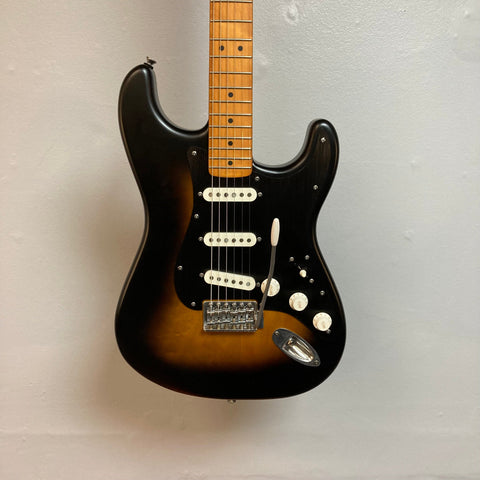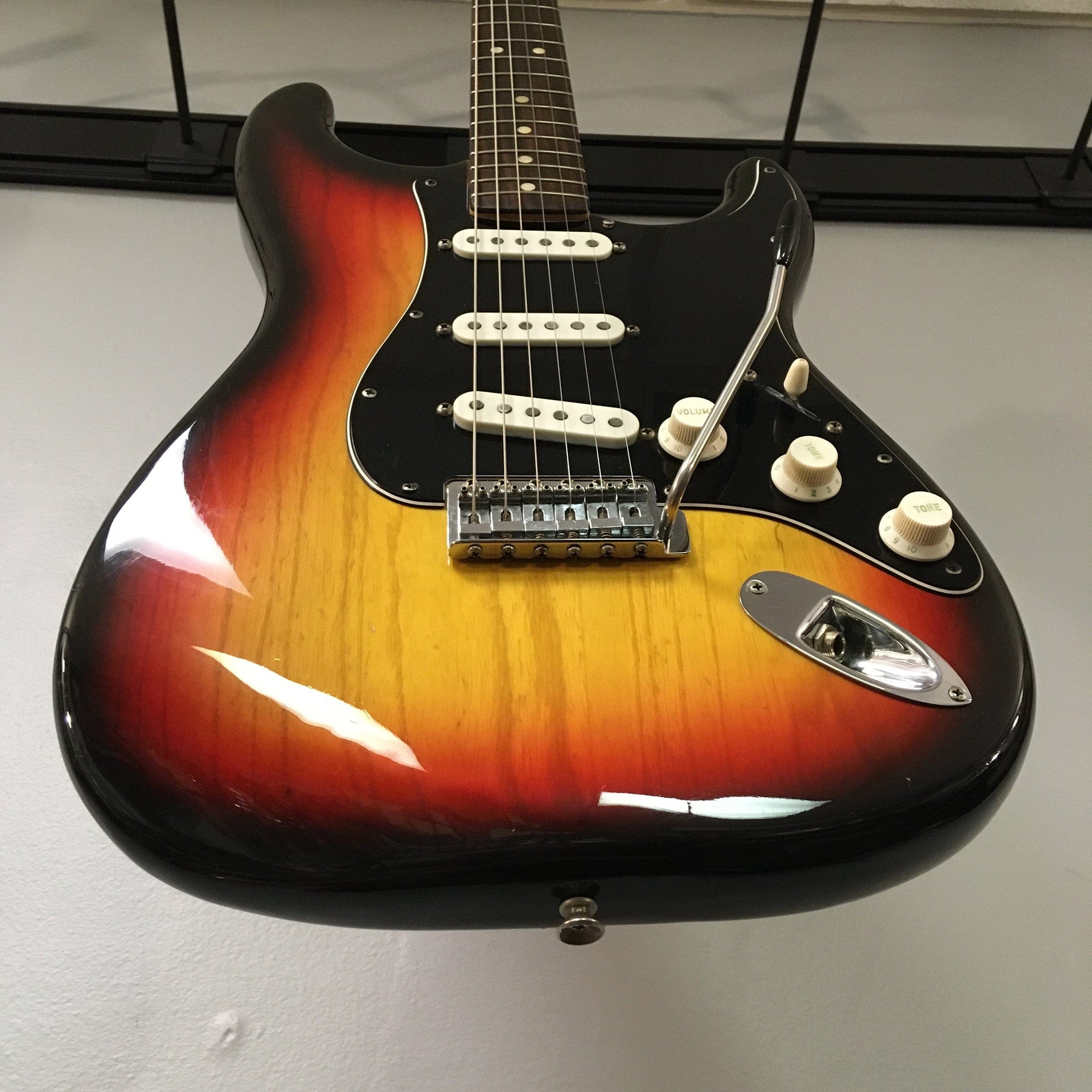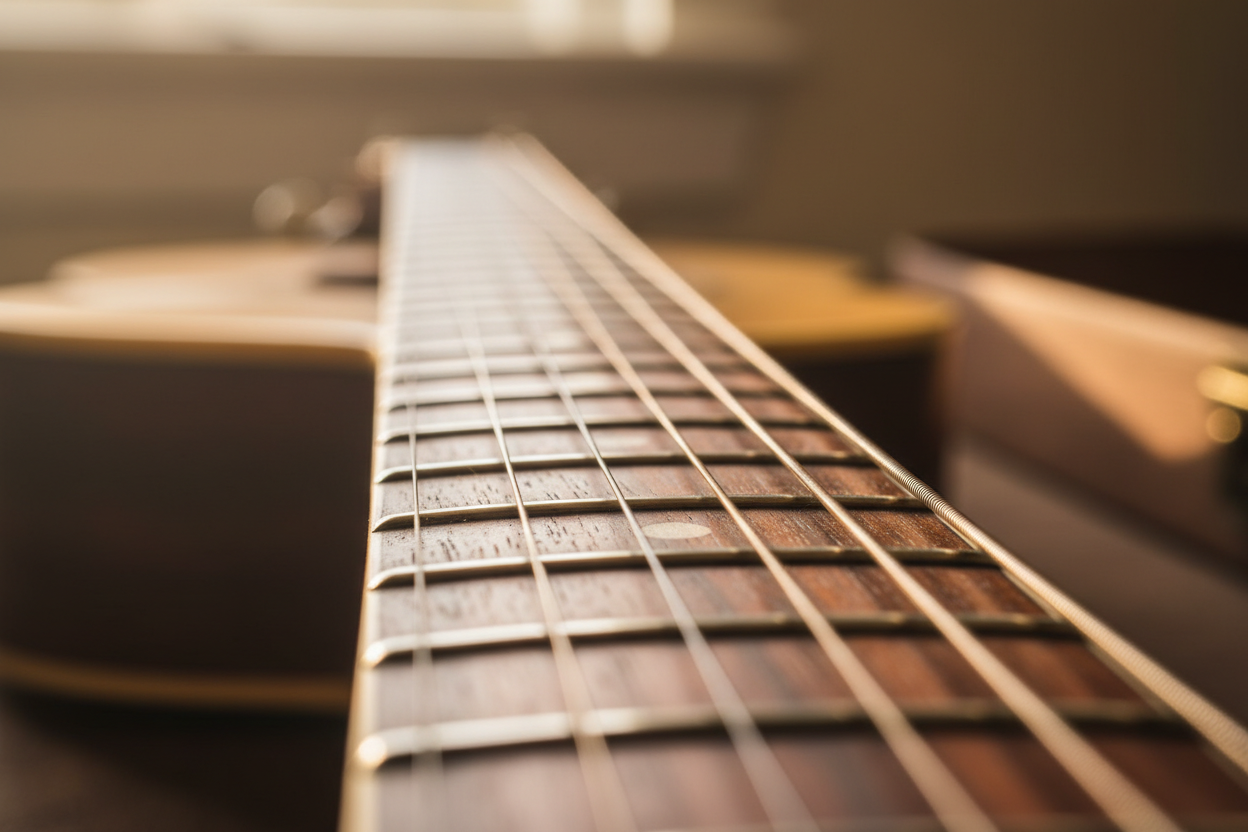Stratocasters are superstars in the guitar world. These guitars have defined so many careers, songs, albums, and whole genres. The sensitive and vibrant tunes a Strat can play can be recognized as fast as playing a few notes.
Fender started developing Strats between 1952 and 1954 when the first guitars saw the market. The guitars have been developed since, including the design, the different woods, and polishes, as well as the electronics for pickups and outputs.
They have been so popular that many other manufacturers used them as inspiration for their guitars. There were many manufacturers that tried copying it to the fullest, and out of these emerged a company that has seen the most success – Squier.
Many swear that they don’t see or hear any difference between Fender and Squier Strats, though others see them as completely different guitars. To each their own, but we’ve tried to categorize the similarities and differences for you so you’d know which one would work for you.
Fender Stratocaster
Leo Fender’s and his collaborators’ baby, Stratocaster, has been on the scene since the ‘50s and witnessed some major revolutions in music as well as some important historical milestones.
Shape and Materials
Developed for the growing blues, soul, and rock/rockabilly scene, Stratocaster was created with a particular shape that has since been used as an inspiration for many guitars. The shape is what is first noticeable, followed by the quality polish feel and good balance between the neck and the, at times, original body design. The body used the “double-horn” design to counter the weight from the back of the body, tilting it more to the center of the wire (or the 12th fret).
The head is a little bigger to counter the weight between the body and the neck, making it a slightly heavier guitar among electric guitars. The overall outlook of the guitar was so accepted that it brought its own type of guitars, created by other companies (S-type guitars).
The Stratocaster, is known for its double-cutaway design. Its body is made up of two pieces of wood, the neck and the body, each cut from a single piece. However, depending on the model and year of production, Stratocaster bodies can be made from two to three pieces of wood, usually ash or alder.
The wood is first cut using CNC machines, which provide precise and uniform cuts. Once the basic shape is formed, Fender craftsmen perform finishing touches such as sanding to refine the body's contours and ensure a smooth finish.
The original coloring of Stratocasters included the two-color and three-color sunburst patterns, and you could see various and even highly unique custom coloring. The polish is smooth and long-lasting, though a guitar could use some refreshment after a couple of years to ensure the pristine shine.
Given the uni-cut neckpiece, an enthusiast would recognize maple as the primary option for neck pieces, as well as its alternatives and synthetic-composite replacements. Maple, since it’s hard, is known for steady response and attack when playing, as well as allowing smooth bending.
Though maple is the most common wood for a Strat neck, you can find Strats with rosewood or pau ferro fretboards, for those that appreciate a softer touch and smoother grain.
This introduces the modular nature of Stratocasters, which became a staple and brought a variety of Strat series as well as unique custom builds.
Bridge, Electronics, and Pickups
Original Stratocasters have been created with proprietary tremolo/vibrato bridges that have also contributed to their popularity.
Stratocaster introduced three single-coil pickups. The original idea was to introduce a guitar that can offer a single-coil play as well as a double-coil. Enthusiasts experimented with their coils and quickly found out that there is a difference in sound depending on which coil is on, as well as the different combinations of coils.
This brought the option of a 5-position switch compared to the original 3-position switches that allow for different pickup combinations.
Fender has been using top-quality materials for their magnets, coils, and wiring for electronics in Strats. The electronics usually don’t need any change and work as reliably after decades as when the guitar was bought. The materials were picked with precision and steady resistance scores which make the same sound across individual models within a series.
The three-pickup setting is also highly modular, and this means that there is a variety of options for custom builds and modifications. You can’t be surprised if you see a double-coil and even active magnets in a Strat. Around Strats and Telecasters, however, a vast pickup and electronics marketplace has been developed, that covers all possible options for a player’s preference.
Squier Stratocaster 
Squier was one of the companies that specialized in creating Fender replicas, both Telecasters and Stratocasters. They emerged victorious in their line of competition and became a go-to brand for affordable S-type and T-type guitars. Let’s check how they’ve done this, and what are their uses as well as limitations compared to original Fender Strats.
Squier Strat Body and Design
Squier diligently follows the designs of the original Stratocaster series, so there’s not much difference in how the two guitars look. This goes for the coloring as well as the staple two-horn body.
The main difference is that most Squier bodies are cut out into two parts, and through mass-production means. This additionally reduces production costs along with the use of cheaper wood alternatives. The result is something that looks very similar to the real deal, though the machine processing and the difference in wood grain are not addressed with the finesse that hand-carving allows.
The overall material quality is reduced and picked by the preference of mass production. This can be felt most in the neck.
Depending on the model, Squier necks can be made of one or two pieces of wood. In that case, you get a guitar made of four parts instead of the ideal two.
The replacement woods that are used in necks can be a little softer than maple, and the grain can be harder to control, which makes bending a little trickier over slightly grittier surfaces. The quality of polish (if exists) doesn’t make up for the wood grain, and it can fall off more easily after a couple of months or years of playing.

The biggest deal-breaker for some professional guitar players can be the fretwork. The fret surface on a Squier is not as smooth as the Fender and is most noticeable when using vibrato and bending techniques. The fret ends have also been known to be sharp on some models as well. These issues can be easily solved with a good fret dressing and setup to make your Squier feel like a high-end instrument.
Finally, most users notice less sensitive tuning pegs that can also be someone’s pet peeve.
To complete the design review, we can shout out to the guitar finish, which can be very smooth and well done.
Electronics
Overall, Squier Strats follow the well-design electronics and pickup setups of original Fender Strats. The quality of wiring and coils can be objectively lower when probing.
However, the overall feel and vibe are there, and you can argue that there is not much difference in the tone quality between Squier and Fender Strats, though you can notice a purer tone in Fender Strats.
There’s not much to say about the pickups since the setup is created to emulate the original Stratocaster sound, and the hardware is doing this well enough. The similarities have their limits, and there are objective differences in tone quality. Strat is, however, great for upgrades and modifications, and this goes for Squier Strats as well. There are some small and large modifications (frets, machine heads, pickups…) that can help you improve its sound.
Conclusion
In honesty, the difference between Squier and Fender in tone is not proportional to the difference in pricing. Squier Strats are a decent emulation of original Fender Strats and can be considerably cheaper than originals.
This fact makes Squier Strats great for all those that are looking for an affordable alternative to one of the most famous single-coil guitars. This includes working musicians and hobbyists alike, that are looking for an affordable S-type guitar. Squier Strats are the best bang for the buck with reasonable limitations that can be worked with in time.
If you are looking for the most pristine and quality sound, a guitar that was built to last, and you are okay with spending a bit more so you can display a beautiful guitar and its sound, you shouldn’t look further than a Fender Strat.





